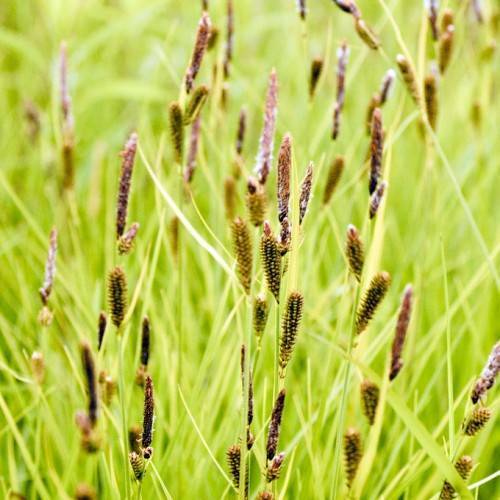
Sedge
Carex lacustris x
Watering:
Frequent
Hardiness Zone:
Sun:
full sun,part shade
Leaf:
Yes
Growth Rate:
Low
Drought Tolerant:
Yes
Salt Tolerant:
Yes
Care Level:
Medium
watering
Watering frequency and amount for Sedge (Carex lachenalii x) will depend upon the climate and soil conditions. Generally, this plant should be given a regular and consistent supply of moisture during the growing season. Water the plant deeply every 1-2 weeks during the warmer months, depending on your particular climate and whether the soil stays moist or dries out quickly. Avoid letting the soil dry out completely. During the cooler months, you can reduce the frequency of watering to every 3-5 weeks. Water the soil slowly and thoroughly, until water starts to pour out of the bottom of the pot.
sunlight
Sedge (Carex lachenalii x) thrives best in bright, indirect sunlight. Direct sunlight should be avoided during midday when the sun's rays are the strongest. For optimal growth, this species should receive around 4 to 6 hours of sunlight per day, ideally early morning or late afternoon. Morning sun will help the plant begin the day with energy necessary for photosynthesis. Meanwhile, the late afternoon sun will provide the plant with enough light to finish the day strong and prepare for the following day.
pruning
The best time to prune a Sedge (Carex lachenalii x) is in late winter or early spring. Pruning is not necessary for optimal health, but it can be beneficial for encouraging new growth and helping to maintain the overall size and shape of the plant. Prune back the old, dead stems to a few inches above the soil, leaving the foliage existing on the new growth. This will help keep the plant looking neat and tidy. It is also important to remove dead, diseased or broken leaves. Prune away any stems that are overcrowded or growing too closely together. Doing this will help reduce disease problems and promote stronger, fuller growth. Prune the stems to a manageable size to ensure that the plant does not overtake its growing space in the garden. Prune to maintain the desired shape, size and overall look of the plant.
